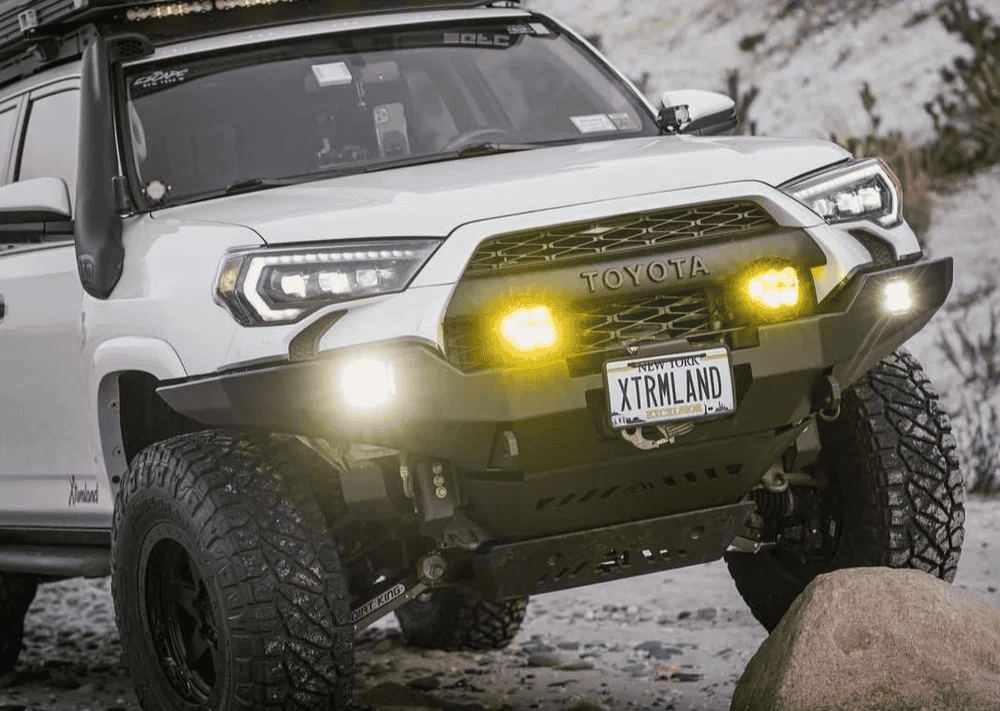Overland Vehicles

The Trans America Trail is a mostly unpaved line across the country that favors county dirt, forest roads, and remote two track. Riders and drivers traditionally begin near the southern Appalachians and finish at the Oregon coast, touching long stretches of farmland, high desert, and alpine terrain. The route evolves over time as access, closures, and weather reshape segments, so current maps from reputable sources are essential.
Expect terrain variety. In the east you will see quick turns, rolling hills, and short sight lines. The plains bring wind, straight roads, and long distances between services. Mountain states add grades, shelf roads, loose rock, and sudden weather swings. Snowpack, rain, and fire closures can force reroutes, so schedule flex matters as much as vehicle capability.
Daily pace is modest. Dirt and gravel demand patience, steady inputs, and the discipline to stop when conditions deteriorate. Many travelers plan four to six hours of moving time per day with room for problem solving, photo stops, and resupply.
Use layered navigation to reduce risk. Paper maps, downloaded GPX tracks, and offline satellite layers complement each other. Confirm fuel ranges between towns, and note bail out roads that lead to pavement if storms roll in or closures appear.
Spring runoff, late season snow on passes, and summer thunderstorms shape timing. The central corridor can be muddy after heavy rain. Western sections can bring dust, fire closures, or early snow. Watch both macro forecasts and local advisories before committing to a segment.
Plan conservative ranges. Carry extra fuel where distances stretch and towns are sparse. Water storage should support drinking, cooking, and a buffer for heat or delays. Build a habit of topping off early in the day.
A capable Trans America Trail TAT vehicle prioritizes traction, protection, range, and recovery. You do not need a rock crawler. You need a balanced setup that tracks straight on gravel, climbs loose grades, and shrugs off washboard without overheating components.
Start with tires built for dirt and mixed surfaces. An all terrain tread with a strong carcass helps resist punctures without adding unnecessary weight. Carry a full size spare and know your repair kit. Air management is a force multiplier because proper pressures improve grip, comfort, and component life.
Suspension should emphasize control and heat management. Quality dampers with appropriate spring rates keep the chassis composed when loaded with gear. Skid plates for vulnerable components, rock rails for body protection, and a solid front recovery point reduce risk when the route gets rough.
Choose a tire size that preserves gearing and braking. Lightweight wheels with proper load ratings matter more than cosmetic style. Pack a plug kit, patches, valve cores, a compressor, and learn to use them calmly on the shoulder.
Target usable travel and damping control rather than simply adding height. Protect the underside, steering, and brake lines. Check torque on fasteners after the first bumpy days, then set a recurring inspection cadence.
Dual battery or power management supports fridges, lights, comms, and device charging without stranding the starter. Redundant comms can include a satellite messenger and a small handheld radio where licensed and appropriate. Keep cords tidy and labeled to avoid mistakes in the dark.
Smart packing beats heavy packing. Focus on water, fuel, nutrition, sleep shelter, first aid, and tools you can actually operate. Equipment that solves multiple problems earns a place. Keep weight low and centered to preserve handling and braking on loose surfaces.
Recovery discipline is a mindset. Walk a questionable section on foot before committing. Use a spotter on tight lines. When in doubt, back out. Respect private land and posted closures, and adopt tread lightly practices so the route stays open for the next traveler.
If you are traveling solo, share daily check ins and your intended bail out corridors with someone off trail. If in a group, match the daily plan to the least experienced driver, and make sure everyone can perform basic repairs and navigation tasks.
Pick campsites with wind protection and drainage. Secure food from wildlife and pack out trash. Start early to bank daylight, and stop early enough to inspect gear, eat, and rest.
Route segments cross mixed jurisdictions. Confirm street legality for your vehicle, observe local speed limits on county roads, and respect gates and seasonal closures. A friendly wave goes a long way in farm and ranch country.
Basic gear should include a shovel, traction boards, soft shackles, a rated rope, gloves, and a well organized tool roll. Practice before the trip so every task feels routine when the stakes are higher.
If your checklist feels long, that is normal. The Trans America Trail rewards a vehicle that is calm and predictable more than flashy. When you are ready to shape a trail focused build with measured suspension, correct tire fitment, organized storage, and dependable power, explore our Overland rigs. For tailored components, layouts, and systems that match your route and season, see our Custom overland upfit. Want to understand our process, team, and handoff experience in Northwest Arkansas before you commit? Visit Why choose OZK Customs.
Ready to build a proven TAT vehicle that handles washboard, switchbacks, and long remote gaps without drama? Tell us how you travel and we will engineer a custom overland setup that fits your route, pace, and season. Submit the form and our team will map your build around tires, suspension, power, storage, and safety so you can focus on the journey.
ADDRESS:
6159 E Huntsville Rd, Fayetteville, AR 72701
PHONE:
(479) 326-9200
EMAIL:
info@ozkvans.com